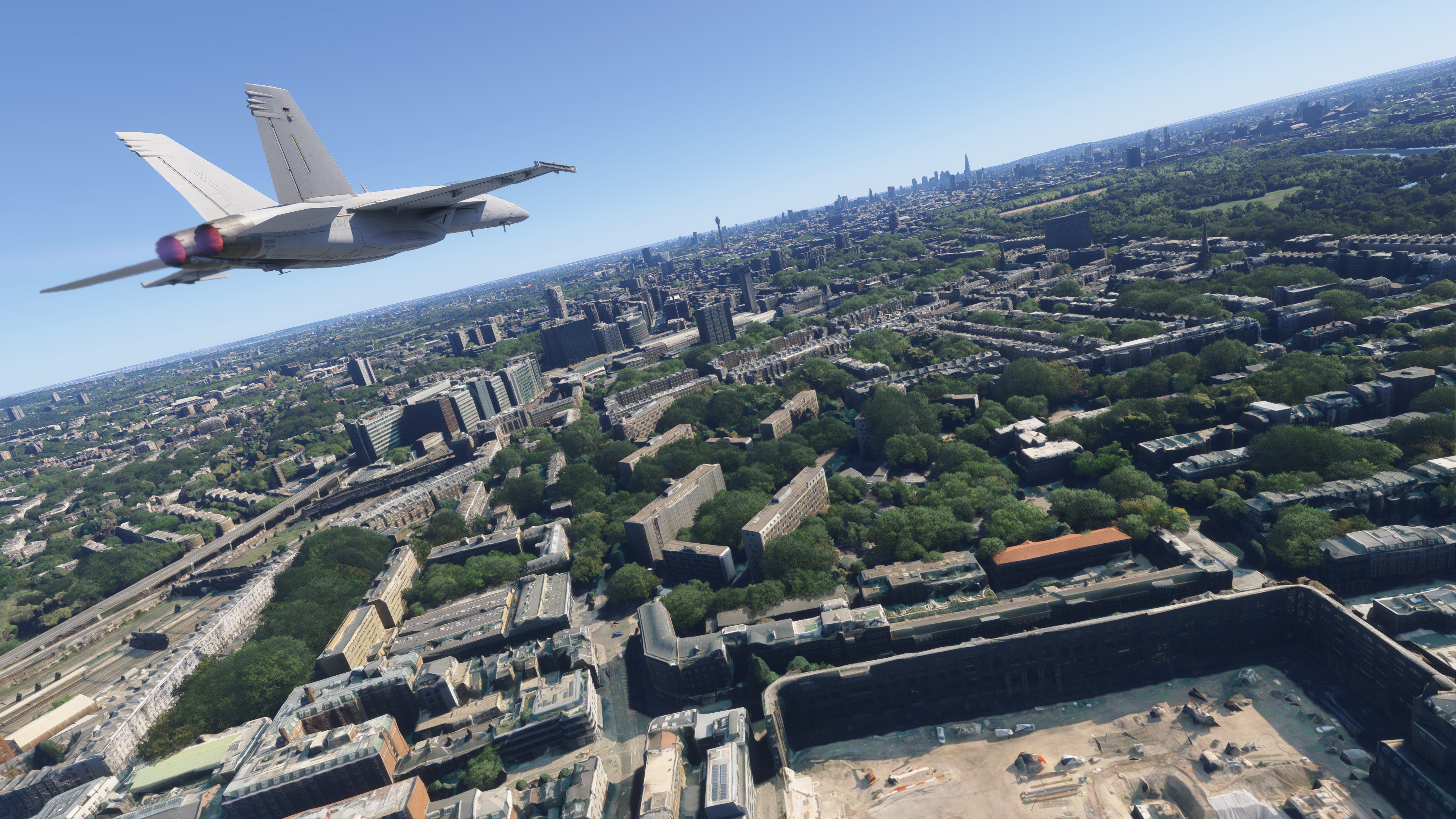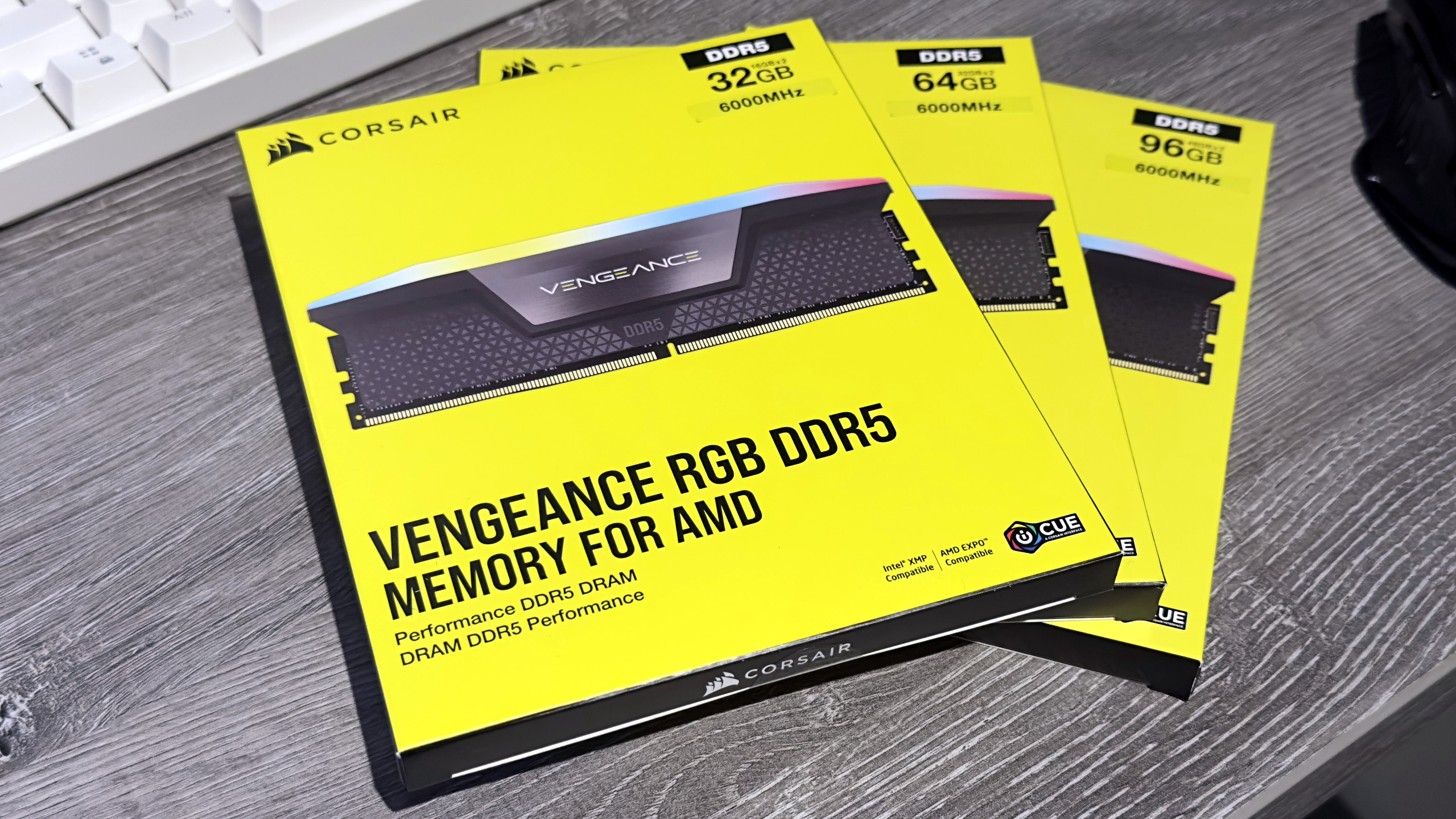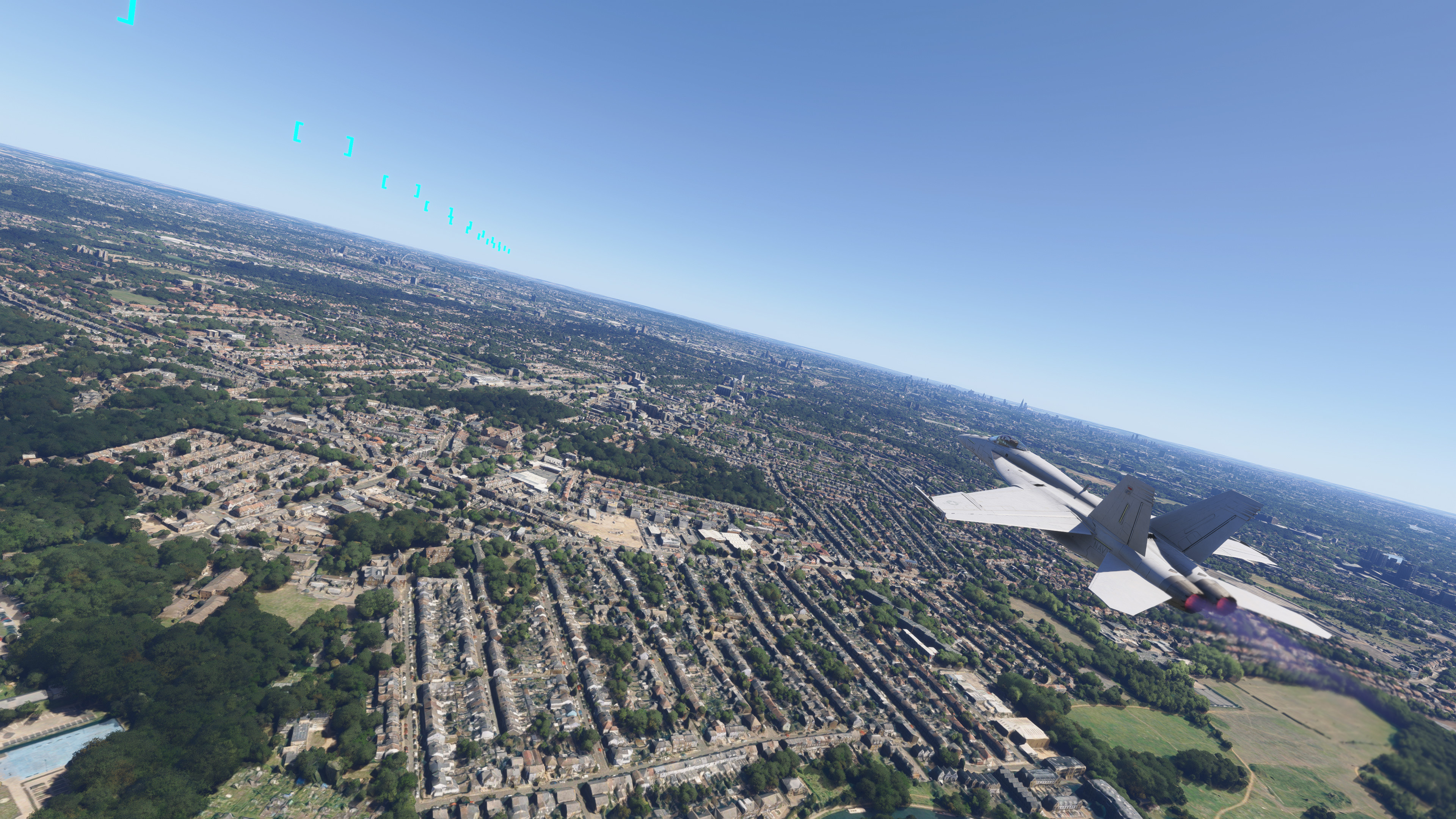Microsoft says 64 GB is the 'ideal spec' for Flight Simulator 2024 but I've tested it with 96 GB, and it makes a big difference
It's the first game I've tested where more than 32 GB is actually worth having.

Recent updates
December 7: This article has been updated to include details about RAM usage and a clarification about Internet bandwidth.
When Microsoft released the system requirements for its latest iteration of Flight Simulator, there was probably a worldwide intake of breath, followed by a groan of despair from the sim community. Apart from recommending a Core i7 14700K and RTX 4080 combination as the 'ideal spec', Microsoft also suggests 64 GB of system memory would be handy to have, too. Now that the game is finally in a playable state, I've tested it with up to 96 GB of system memory to see if a small mountain of memory really does make a difference.
I had hoped to do this when Flight Simulator 2024 launched a couple of weeks ago, but it was in such a rough state I couldn't log in for a few days and, even then, it was a buggy and broken mess. Fortunately, things are better now and while it's still quite stuttery and sluggish at times, I've managed to carry out two days' worth of performance tests, using different amounts of system memory.
The test platform used comprises a Ryzen 9 9900X in an Asus X670E Crosshair Hero motherboard, with a GeForce RTX 4070 Ti handling rendering duties. I tested at 4K, with DLSS Balanced, with the game's 'High-end' preset selected for graphics. One particular setting was altered, though, namely the Off Screen Terrain Pre-Caching option. That was put to its maximum value, Ultra, to ensure Flight Simulator 2024 used as much system memory as possible.
For system memory, Corsair kindly provided three Vengeance RGB DDR5 kits (32, 64, and 96 GB), all running at 6,000 MT/s with a CAS latency of 30 cycles. The 16 GB kit was an old one that I had spare, though it took a bit of BIOS tweaking to get it to run at the same speed and CAS latency as the Corsair models; some of the other RAM timings are a bit slower, so those particular results aren't 100% comparable.
To collate enough information, I used multiple flights from and to London Heathrow airport using the same aircraft, with each flight lasting 10 minutes, all done at a low altitude. The date, time, and weather were all fixed, and air traffic was AI-controlled.
If I'm honest, I genuinely didn't expect to see any major benefits of using more than 32 GB of system, despite Microsoft's claims. Or at the very least, not with this particular configuration of CPU and GPU—an RTX 4070 Ti is hardly a top-end graphics card, after all.
And yet, as you can clearly see, Microsoft Flight Simulator 2024 really does love RAM. We've been touted for ages that 32 GB is more than enough memory for gaming and while that's certainly the case for the vast majority of games, that's not the case here.
The biggest gaming news, reviews and hardware deals
Keep up to date with the most important stories and the best deals, as picked by the PC Gamer team.
The 1% Low figures are 31% better, and it's a marked difference while you're flying around.
At face value, there's nothing wrong with the 32 GB performance results and with 96 GB, the average frame rate is only 10% higher. However, the 1% Low figures are 31% better, and it's a marked difference while you're flying around. Compared to 64 GB, the uplift with using 96 GB is smaller but still quite impressive: 6% higher average fps, 17% better lows.
One thing worth noting though is that Flight Simulator is quite sensitive to RAM speed, or at least it certainly is with a Ryzen setup like mine. Running the 96 GB tests again, but this time with memory set to the Jedec default of 4,800 MT/s in the BIOS, produced an average frame rate of 50 fps, with a 1% Low of 35 fps. For a speed reduction of 20%, the average fps dropped by 11% and the lows by 17%.
So it's not just a case that Flight Simulator loves mountains of RAM, it especially wants mountains of fast RAM. And it's not just the in-game performance that's enamoured with copious amounts of system memory.
Update: Further testing has shown that while Flight Simulator 2024 is running, the total system RAM usage doesn't exceed 30 GB, regardless of the amount installed. So the use of 96 GB doesn't fully explain the performance gains over 64 GB; however, the frame rates were checked again and found to be the same.

With 16 or 32 GB of memory, Flight Simulator 2024 badly jerks and lags as it tries to load in the world when starting a flight. Even just moving about in the menus isn't especially smooth with those amounts of RAM. But with 64 and 96 GB, it's almost stutter-free. Almost. Microsoft still needs to work on sorting that out, as it spoils an otherwise decent experience. It also really must address the fact it takes a ridiculous amount of time to load the darn game.
On average, it takes me around 10 minutes to go through the 'activating packages' stage of the game's initial loading, though it's a quarter of that time on another, more powerful, gaming rig. That's an absurd amount of time and it made testing Flight Simulator 2024 an extremely tedious process. I certainly have no desire to play it very much right now, that's for sure.
Despite the interminable loading times and its avarice for RAM, Microsoft's Flight Sim 2024 isn't as demanding on PC hardware as I expected it to be. The Ryzen 9 9900X is certainly a high-end CPU but it's not the best gaming CPU one can buy, and the RTX 4070 Ti is easily less powerful than other models from AMD and Nvidia. Pulling over 50 fps on average at 4K, admittedly with upscaling, is a pleasant surprise for this genre of game.
With support for DLSS 3 frame generation (but sadly not FSR 3 frame generation), Microsoft Flight Simulator 2024 runs well over 100 fps and you really can't tell that it's active—the increased input latency doesn't matter because you never have to rely on milliseconds of reaction time.

I measured a peak bandwidth load of 25 Mbps over Wi-Fi with 32 GB installed and just 5 Mbps with 64 GB.
It's not even especially heavy on one's Internet connection and SSDs. For a separate test to check these out, I conducted some low-level flights in an F/A-18E Super Hornet, hooning around London at breakneck speeds to force the game to load up assets as quickly as possible.
I measured a peak bandwidth load of 25 Mbps over Wi-Fi with 32 GB installed and just 5 Mbps with 64 GB; in both cases, the SSD that hosted the game and all its assets averaged 250 MB/s of data reading. Neither value is especially high, which is good news, though both figures increase in size when you have less RAM in your gaming PC.
Update: It seems that the area around Heathrow airport doesn't involve a lot of asset loading. Flights over New York city, for example, maxed out the net connection, regardless of how much RAM was installed.
So if you want to dive into Microsoft's new version of Flight Simulator, then you may want to consider adding as much RAM to your gaming PC as possible. The only problem is that while 32 GB kits are very affordable right, 64 and 96 GB kits are painfully expensive—the latter that Corsair sent over is a little under $360 on Amazon right now.
Still, at least you'd never have to worry about not having enough RAM for games any time soon. Well, until the next version of Flight Simulator comes out.

Nick, gaming, and computers all first met in 1981, with the love affair starting on a Sinclair ZX81 in kit form and a book on ZX Basic. He ended up becoming a physics and IT teacher, but by the late 1990s decided it was time to cut his teeth writing for a long defunct UK tech site. He went on to do the same at Madonion, helping to write the help files for 3DMark and PCMark. After a short stint working at Beyond3D.com, Nick joined Futuremark (MadOnion rebranded) full-time, as editor-in-chief for its gaming and hardware section, YouGamers. After the site shutdown, he became an engineering and computing lecturer for many years, but missed the writing bug. Cue four years at TechSpot.com and over 100 long articles on anything and everything. He freely admits to being far too obsessed with GPUs and open world grindy RPGs, but who isn't these days?

